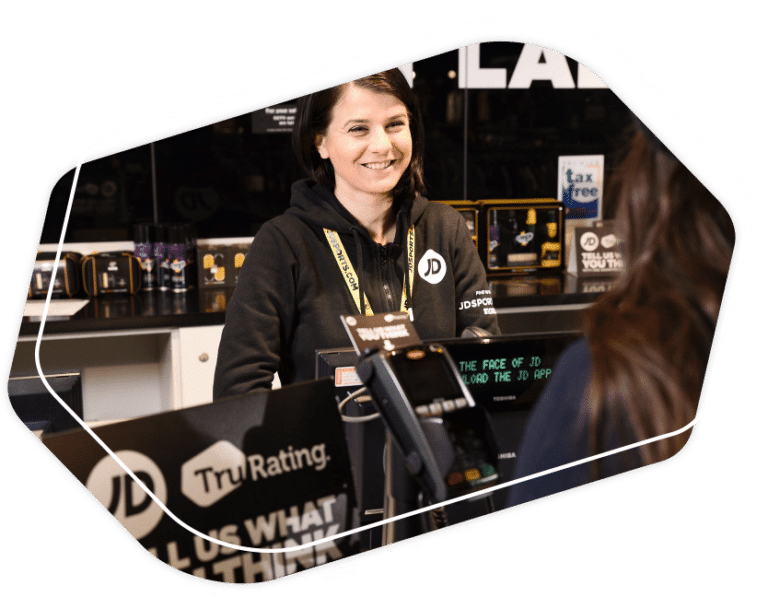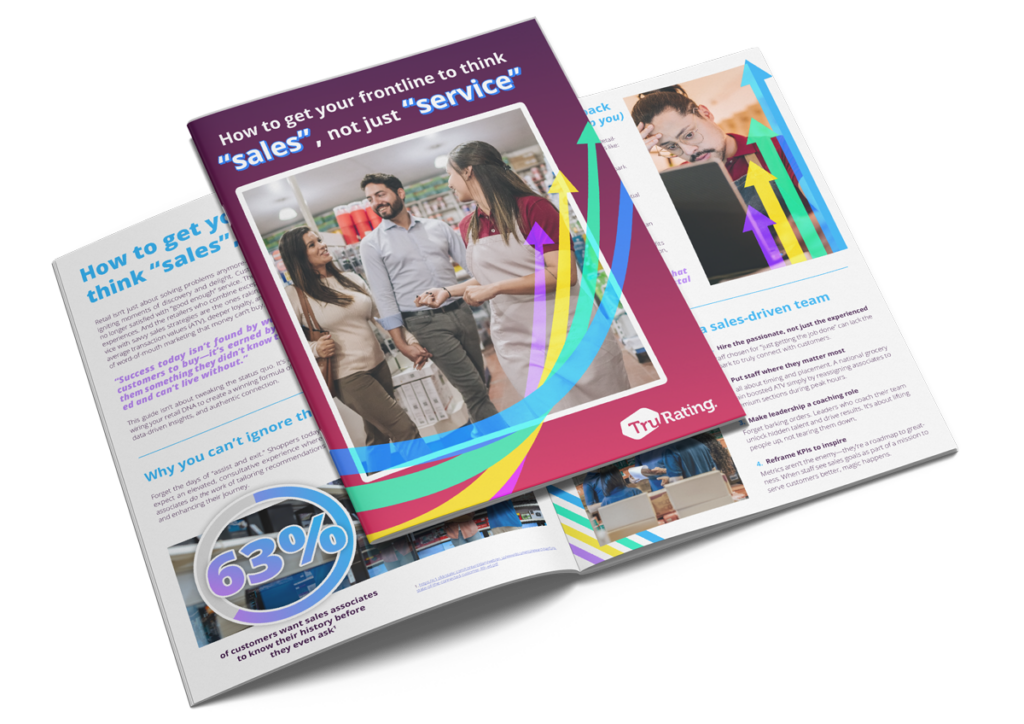Brand sentiment is the intangible yet powerful emotional connection consumers have with a brand. It shapes consumer behavior, affects purchasing decisions, and ultimately impacts your bottom line. Understanding, measuring, and improving brand sentiment should be a priority for all retailers aiming to thrive in a competitive market.
Take Adidas, whose brand momentum has been on the rise this year. The company saw an 11% increase in currency-neutral sales, with a significant €346 million operating profit for Q2, compared to €176 million the previous year. This impressive performance was attributed to “improved sentiment” around the Adidas brand globally.
In this guide, we will explore the importance of brand sentiment, how you can measure it, and actionable strategies for leveraging it to drive growth and success in your retail business.
What is brand sentiment?
Brand sentiment refers to the emotions and perceptions consumers associate with your brand. These feelings can be positive, neutral, or negative and are usually expressed through customer reviews, social media mentions, and direct feedback.
For example, a shopper might leave a glowing review praising the high quality of a product but criticize customer service. That nuanced feedback impacts the overall sentiment analysis, which evaluates emotional context across various touchpoints (we will come onto that more later).
Why you should monitor brand sentiment?
Monitoring brand sentiment isn’t just a luxury; it’s essential for retailers to stay competitive. As seen in the recent SK-II brand’s situation, negative sentiment can have significant financial repercussions. SK-II skincare sales plummeted by 34% in the last quarter of 2023 due to increasing negative sentiment in China, highlighting the potential impact of sentiment on a brand’s performance.
It’s important to monitor sentiment to understand consumers’ feelings about your products, services, and overall brand. Positive sentiment can indicate brand loyalty and potential revenue growth, while negative sentiment might signal high customer churn and a damaged reputation.
Here’s why monitoring brand sentiment is so important:
- Identify customer pain points – by analyzing negative comments, you can identify issues affecting your brand’s performance and address them before they escalate.
- React to market changes – track fluctuations in sentiment following product launches, marketing campaigns, or external events.
- Maintain customer loyalty – a deep understanding of how consumers feel about your brand helps in creating strategies to enhance loyalty and customer retention.
- Stay competitive – monitoring brand sentiment allows you to track how your brand is perceived compared to competitors, giving you a competitive advantage.
Brand image vs. sentiment
Many retailers often confuse brand image with brand sentiment, but understanding the distinction is important. Brand image is how consumers view your brand’s identity, logo, design, and customer-facing elements. It’s more static and controlled by the company.
Brand sentiment, on the other hand, is fluid and constantly evolving. It’s how people emotionally react to your products and services. While brand image can set expectations, brand sentiment reveals whether those expectations are being met or exceeded.
For instance, in the Adidas example mentioned above, a strong brand image in performance and lifestyle products set the stage, but it was the improved brand sentiment that helped drive their sales success.
How to measure brand sentiment
Measuring brand sentiment requires analyzing consumer feedback across various channels. The most common methods for gathering sentiment data include:
1. Social media monitoring
Social media platforms are often the first place where consumers express their opinions about a brand. Using social media monitoring tools, retailers can track positive, neutral, and negative mentions to gauge how people feel about their brand.
2. Customer reviews and surveys
Customer feedback through surveys or reviews provides valuable insights into how people feel about your products or services. Tools like TruRating’s customer feedback platform allow retailers to gather real-time sentiment in-store, capturing the voice of the consumer at the moment of purchase.
3. Sentiment analysis tools
These tools use Natural Language Processing (NLP) and machine learning algorithms to analyze customer interactions, including text data from surveys, reviews, or social media. They identify emotional keywords and categorize them as positive, negative, or neutral. This process, often referred to as opinion mining, provides a clearer understanding of consumer sentiment.
What is brand sentiment analysis?
Brand sentiment analysis refers to the process of using tools and techniques to evaluate the overall perception of your brand by consumers. Sentiment analysis works by analyzing text data, such as social media posts, reviews, or survey responses, to categorize mentions of your brand as positive, neutral, or negative.
By using NLP and machine learning, sentiment analysis tools can identify the tone and emotional context of these mentions, giving you a snapshot of consumer sentiment.
For example, if customers frequently describe your store as “amazing” or “disappointing,” sentiment analysis tools will pick up on these keywords and assign a positive or negative value to the data. The more data you collect from various channels, the clearer the picture of your brand’s sentiment will be
Brand product sentiment analysis
Specific product feedback offers valuable insights into product sentiment. By isolating reviews or comments about individual products, retailers can better understand what’s working and what’s not. For instance, a product that frequently receives feedback about being “too expensive” despite its quality might indicate a pricing issue rather than a problem with the product itself.
Sentiment analysis metrics
To fully harness sentiment analysis, it’s important to understand the key metrics that can be tracked:
- Sentiment score – this is a composite score derived from positive, neutral, and negative mentions. It provides a quantitative measure of how well your brand is perceived.
- Sentiment velocity – this metric tracks how quickly sentiment around your brand is shifting. A sudden increase in negative sentiment might signal a PR crisis, while rising positive sentiment can indicate successful marketing or product launches.
- Topic sentiment – this dives deeper into sentiment around specific areas of your business—like customer service, product quality, or price. It helps you identify areas of strength and weakness.
How to improve brand sentiment
Improving brand sentiment requires active listening and swift action. Here are some strategies retailers can implement:
- Listen to your customers – consumers want to feel heard. Respond to negative feedback promptly and acknowledge customer concerns. By showing you’re listening, you can turn a negative experience into a positive one.
- Engage positively on social media – social media is a powerful tool for connecting with your audience. Engage with your customers by responding to comments, sharing positive stories, and being transparent during crises. Build a community that feels valued.
- Improve customer service – customer service is often the touchpoint that influences brand sentiment the most. By providing excellent service, you create positive experiences that customers will remember and share.
- Refine your brand messaging – ensure your brand message aligns with consumer expectations. If your marketing promises convenience, but customers experience delays, sentiment will shift negatively. Keep promises consistent across all touchpoints.
Brand sentiment survey questions
Here are some targeted questions that can help you gauge brand sentiment:
General brand sentiment
1. “Are you satisfied with your overall experience with our brand?”
Allow customers to share their feelings about your brand directly.
2. “Do you rank our brand higher than others in the market?”
Helps gauge your position relative to competitors.
3. “How satisfied are you with our brand’s mission and values?”
Focuses on alignment between the brand’s identity and customer values.
4. “If you had to rate your trust in our brand, what would you give us?”
Trust is a key indicator of positive sentiment, especially in today’s market.
Product or service quality
5. “How satisfied are you with the quality of our products/services?”
Measures sentiment towards the core offering of the brand.
6. “Did our products/services meet your expectations?”
Gives insight into whether your offerings align with customer expectations.
7. “Is this the first time you have used our product/service?”
Helps identify new or returning product purchasers or customers
8. “Have you encountered any issues with our products/services?”
Allows customers to express any negative experiences.
9. “How would you rate the value for money of our products?”
Sentiment around pricing is crucial for understanding perceived value.
Customer service and support
10. “How satisfied are you with the customer service you received?”
Helps to identify how well customer interactions are being handled.
11. “Was your issue resolved in a timely manner?”
Timeliness often impacts overall sentiment regarding customer service.
12. “How likely are you to seek customer support again if needed?”
Evaluates whether customers feel comfortable reaching out for help.
13. “How easy was it to contact us for support?”
Ease of access can influence brand perception and sentiment.
14. “How would you rate the professionalism and friendliness of our customer service team?”
Provides feedback on team performance.
Purchase and delivery experience
15. “How satisfied are you with your recent purchasing experience?”
Helps track customer satisfaction with the buying process.
16. “Did the product arrive as expected and in good condition?”
A key factor in customer satisfaction and potential repeat purchases.
17. “How easy was it to navigate our website/app and make a purchase?”
Focuses on the usability of the digital shopping experience.
18. “How satisfied are you with the speed of delivery?”
Delivery times can influence customer sentiment significantly.
Brand loyalty and advocacy
19. “How likely are you to recommend our brand to a friend or colleague?”
A common question to assess overall loyalty and satisfaction.
20.”How likely are you to make another purchase from us in the next 6 months?”
Gauges potential for repeat business, a strong indicator of positive sentiment.
21. “Would you switch to another brand?”
Identifies potential threats to brand loyalty.
22. “Have you recommended our brand to others before?”
Explores how loyal a customer has been to your brand.
How TruRating can help you measure brand sentiment
Brand sentiment is a crucial driver of consumer behavior and business growth. Whether you’re analyzing feedback on social media or using sentiment analysis tools to dissect survey data, understanding how consumers feel about your brand can guide strategic decisions. For retailers looking to stay ahead, continually improving brand sentiment is not just a goal but a necessity.
Accurate brand sentiment analysis relies on consistent and reliable feedback from consumers. That’s where TruRating comes in. Our powerful customer feedback platform enables you to gather customer sentiment data right at the moment of purchase, when customers’ feelings are most genuine. Whether you’re monitoring in-store interactions or online experiences, TruRating helps you stay in sync with your customers’ emotions.
One way we can help you gather valuable, meaningful feedback is through our Intelligent Questions product. With IQs, you can create customized survey questions based on the items in a customer’s shopping cart, whether they are in a physical store or shopping online. For example, if a customer has added a specific product to their cart, we can ask them targeted questions about its quality, price, or usability. This lets you get direct insights into what customers think about specific products, helping you make informed decisions to improve your product offerings and overall customer satisfaction. You can also share this information directly with your CPG partners to help them enhance their product offerings.
Make data-driven decisions that positively impact your brand sentiment and drive long-term loyalty. Learn more about our customer feedback platform and book a demo today.












